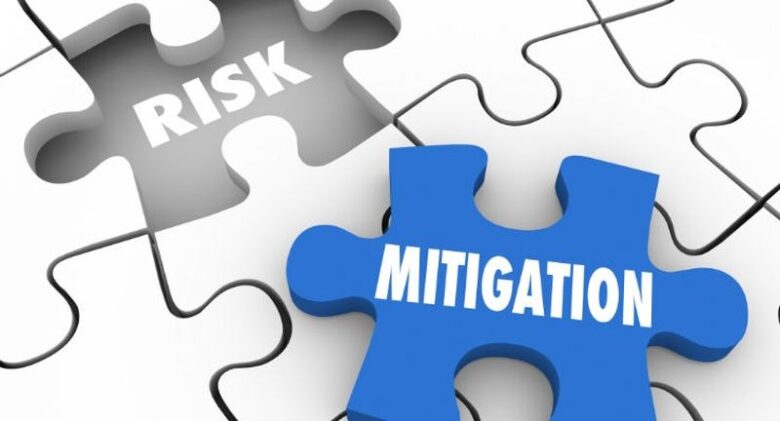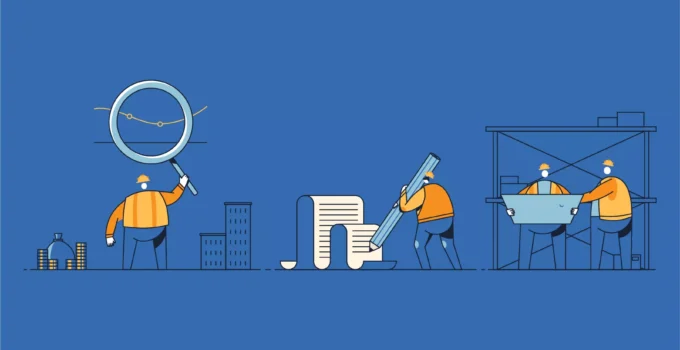Creating a safe and secure environment during the construction process is one of the most important parts of the planning process. In this article, we are going to talk about risk management in construction projects. We will tell you more about this process, how to create it, and how to implement it, and we will also help you learn how to mitigate potential issues. Keep on reading to learn how to create a safe environment and how to prevent and minimize negative scenarios.
What is risk management in construction?

Source: pinterest.com
Let’s first talk about the process of risk management and how it affects construction projects. We all know that construction is one of the riskiest fields and that one small mistake can lead to potential disasters, injuries, deaths, and liability claims. Because of that, we want to be able to find solutions for problems that have not even happened yet, and we want to prevent any potential injuries, errors, delays, and everything else that may end up harming our project, plan, and workers.
The process of risk management includes planning, developing, scheduling, and finding solutions to the procedures that will reduce the chances of risks and damages.
This process starts by creating a plan that will help you and the managers figure out, monitor, and mitigate risks as they arise. As you can see on Jonas Premier, the mitigation process is one of the most important ones if you want to successfully manage the risks, and you can easily do that with the support of services that specialize in the process. Keep in mind that sometimes we are able to prevent potential disasters, and with the right safety measures and plans, we can easily stop anything bad from happening. However, we cannot plan for everything, and sometimes unforeseeable situations do arise. In that case, we need to know what is the right way to react, and we need to make sure that all of our employees and workers are properly trained to know what to do in case something happens. In some cases, the whole construction process needs to stop, and everyone needs to be evacuated from the site, while in other cases, there are steps that need to be taken that will allow the incident to be isolated while the construction continues.
The job of a manager and risk specialist is to have a plan in place so that everyone can know what to do in case something happens.
What is mitigation and how to mitigate potential issues?

Source: pinterest.com
By definition, mitigation is the process of planning for the most unfortunate scenarios, creating a structure, and finding a way to minimize negative effects. A proper plan will create solutions by weighing each potential risk and it will help you prioritize planning and developing strategies that will help you and your brand by minimizing the negative sides.
The easiest way to explain this is to understand that risk management refers to every single part of the construction process. With risk management, we plan, structure, and design for all the negative things that may occur during the process, while mitigation focuses on just one major thing. Eat focuses around limiting the effects that a risk can have and it is considered to be a smaller component of the whole risk management process. This means that mitigation falls under risk management, and it cannot function or be created separately.
Now let’s see what is the best way to mitigate potential issues, and how to ensure that disasters will be minimized and captured before they make a huge impact on the whole construction process.
When it comes to mitigation, there are many different ways to mitigate the risk in construction. The first part is working with the right crew, and knowing that they are properly trained, they know how to react in case an unforeseeable event happens, and they will follow the procedure that has already been established to put in place. Having unreliable workers will maximize the risk of something bad happening, and it will ultimately lead to all glass being thrown away, and to all of that will result in an even bigger disaster.
Keep in mind that every project has to be properly planned, and this has to include a prioritized list of activities that are created in chronological order. This will help you highlight areas where risk may arise and plan in advance. You also have to think about the probability and the consequences of something happening, and this means that you need to think about the likelihood of something bad happening and plan accordingly. Some things are far more likely to happen, and you need to be better prepared for them. However, that does not mean that you should completely forget about the things that are far less likely to happen. Always have a plan in order even for the most unlikely service scenarios.
Having options is another crucial part of the whole plan, and you need to have backup plans that the workers and the crew can use and follow in case a plan cannot be finished. The project manager will have to monitor the plans continuously, and they will need to change things depending on what is happening and how the whole construction process is going. Remember that all of the plans are fluid and they can be changed, as long as you stick to the law and follow regulations. All of the plans have to be constructed depending on the rules and regulations in your location, and you should never try to avoid the law and create scenarios where you will do things without thinking of the consequences.
The major reasons why every construction project meets risk management and mitigation include inadequate budget, poor scheduling, safety hazards, miscommunication, and unforeseen circumstances. You need to plan for all of these cases, and you need to collaborate with people who have the needed experience and expertise in both risk management and mitigation. You cannot start and successfully finish a construction project unless you plan for everything in advance, and you need to invest in proper training and safety equipment to be able to minimize the negative impacts of every potential risk.




